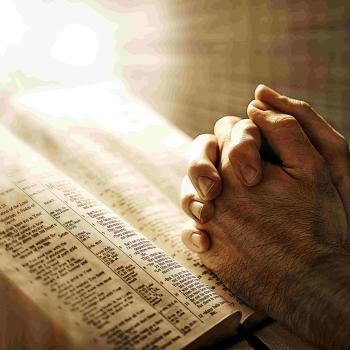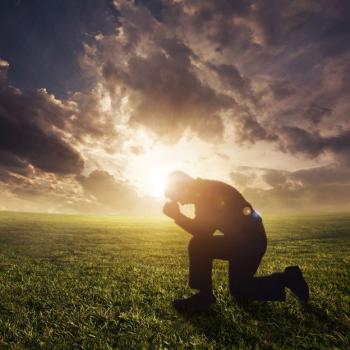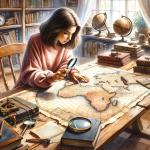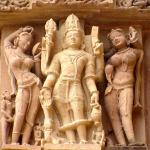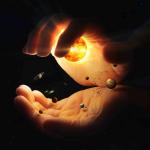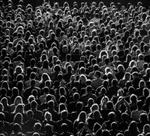
The “Origins” of Creation
We live in a strange time on Earth don’t we? Probably never in our history have there been so many disagreements on creation and existence. To be clear, the arguments are not really new except for the fact that we’re not only arguing within a particular faith or philosophy but due to globalism, changes in technology, literary movements, philosophy, advances in science as well as ignorance, we have achieved an ever-growing wave of questions and a multitude of answers to what or who created what.
Depending on your worldview, there are really five fundamental points on this.
- What does it really mean to exist?
- What does creation really mean?
- Is creation necessary for existence?
- Was God created?
- Did God or some other force/s create the universe and its inhabitants?
These questions have only speculative answers and they fall under a philosophical heading known as “ontology” which relates to the nature of being and existence. Ontology can refer to either religious or secular theories of existence.
In today’s brief segment of time, in our known 21st century, in our tiny corner of reality, in order to better understand ontology and the present-day ideological wars waged between believers and atheists, it is necessary to go back in time to see the roots of this never-ending quest in search of ourselves and our understanding of creation.
Philosophical Origins of Existence
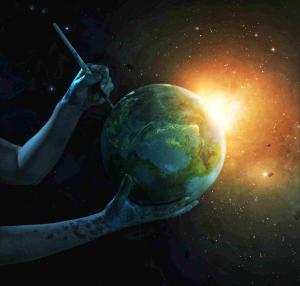
Pre-Socratic Ontology:
Monism
There is a pre-cursory philosophical concept known as Monism which speculates on what constitutes the universe and how elements exist , interact within or are distinct from the universe. More importantly, monism tackles the question of the change or direction of the elements or components of things and their direction to/from their source.
For example, one type of monism known as priority monism, postulates that all elements or things return to a distinct source of origin. This view is most aligned with later developments within the monotheistic Abrahamic religions for example. In such religions, the soul’s return to its origin (God) upon death illustrates the concept of priority monism.
Existence monism is more in line with the pantheistic precursors of polytheistic religions and certain component definitions of God in many other religions in that it states that there is only one universe which may include God, gods, all humans, all celestial bodies, etc. A traditional pantheist believes the universe is all one and the sum of all its parts are just part of that “one”.
Substance monism is a bit different in that it assumes there is only one fundamental substance that exists but that it is present in many subordinate, composite substances.
The remaining 2 fundamental forms of monism Dual aspect and Neutral monism further tackle the “state” of the universe, its existence and its components.
So monism is an important precursor to questions of who or what created the universe and what principles or being governs the stability of the universe and its elements.
Five centuries before Christ (500 B.C.) or as secular scholars would call the common era, there were many speculative cosmological theories on creation and whether some intelligent force or God governs/controls the universe or whether some forces were created to do this in perpetuity. Thus, discussions of monism, whether explicitly stated or not, were a hot topic of discussion.
Heraclitus (ca 500 B.C.)
Heraclitus theory of opposites along with the Yin vs Yang and philosophical theories were documented around the same period and both cosmological ideas try to address the state and balance of the universe and thus claim that nature is a perpetual state of being vs unbeing or in a negative state vs a positive state. To put it more plainly, both theories speculated that the universe is balanced by unchangeable laws of nature that require the needs or voids and the filling of such voids.
Heraclitus’ theory postulated an equivalent relationship between the negative and the positive and speculated that there is an ongoing balance in nature and the universe that is maintained by this constant state of flux. However, while the aforementioned material and substance monists postulate that things or elements can and do change their states, Heraclitus posited radical and perpetual changes from fundamental substance to consequent substances.
Lao Tzu (ca 500 B.C.)
Lao Tzu, and the eastern Daoist theories of Yin and Yang contain a similar narrative in that their theory cites the universe as being in a perpetual state of birth and death or more traditionally put the universe is in perpetual states of becoming and unbecoming.
Thus both Heraclitus and Lao Tzu, due to their contradictions, would be known as variations of “unity or material monists” if evaluated within the lens of this particular branch of philosophy.
Parmenides (ca 540 B.C.)
It is important to mention another great ancient Greek philosopher Parmenides in this discussion since he essentially laid the groundwork for ontological thought itself and he was also a strong influence on all cosmological philosophy when he introduced the premise of “eternal being” where a level of reality exists where nothing changes. Such reality was speculated to exist outside the known domains (time and space) and perception of man.
Plato and the Socratic Dialogues (ca 424-348 B.C.)
Plato’s take on reality is most aligned with that of Parmenides, but Plato also postulated that along with the state of eternal being, a supreme designer of the universe exists (known as the Demiurge) and is distinct from the lower states of existence such that include lesser beings. The eternal state demands no changes to states of existence because there is no need to change a state of perfection. The lesser state of existence which Plato refers to as the everchanging states of “becoming and unbecoming” is the one where we, as humans exist.
Here is a link to a short visual poem “The Truth Outside of Time” I created on this subject:
In a previous article called “Why Do People Reject Religion?”, I referenced Plato’s “Timaeus” dialogue, in which Plato speculatively rendered one of the most analogous profiles to the God of Abraham & imitative creation roughly 360 years before the compilation of the New Testament. The Timaeus was read by many including St. Augustine so its influence on the Bible has always been a subject for debate. However, the question is really whether Plato influenced the translations and possibly the content of the Book of Genesis or whether the Hebrew Bible written well before Plato’s time, influenced his Timaeus dialogue. If we advocate that the Bible is inerrant and/or infallible, we obviously conclude that Plato could not have altered words which have been unequivocally deemed the Word of God. But the converse situation where Plato’s Timaeus may have been influenced by the Hebrew Bible’s Book of Genesis is still a topic for hermeneutical debate. Notwithstanding the Platonic mystery noted above, it should be noted that with the pre-Socratic philosophers and later obviously with Plato, speculative theories on existence and being were just that. Such ideas likely originated from their imaginations plus or minus any outside influences. However, it is important to note that an imagined reality or thoughts therein do not preclude their phenomenological existence.
We can see this with phenomena such as gravity. In 1760, Sir Issac Newton founded the fundamental theory regarding gravity which, as of yet, remains an unproven scientific principle but one that nonetheless drives much of physics and other scientific domains.
In fact, we can see this imagined reality with the creation of every invention on planet Earth.
Religious Origins of Existence
Christianity, Judaism, Islam
When we speak of the origins of existence and creation, there is little debate on this for Christians, Jews as well as Muslims. All creation of life as we know it originated from the God of Abraham. There are however some logic issues that don’t reconcile with secular ontology and it’s an old argument that most of us are familiar with. If all creation has a cause, who created God?
There are a couple of apologetic defenses to this argument however, I seldom see modern day priests and pastors mention or even reference these when the above argument is raised.
St. Thomas of Aquinas, the brilliant theologian, would argue that God exists is the pre-cursory assumption and that He was not subject to creation.
However, what is generally missing is a fuller explanation about the aforementioned distinctions between eternal being versus the states of becoming. The apologetic defense in this case goes like this.
God does not exist but is rather in a state of eternal being. This constitutes a perfect state that is not subject to change. He does not live in time or space as humans know them but he has complete sovereignty over going in and out of these lesser domains in order to interact with His creations.
Thus creation or an act of creation requires a transformation of God from His state of eternal being into a state of becoming or an intermediary level of existence between these states.
What about Hinduism?
Any discussion on existence and creation in the context of religions would be incomplete without including Hinduism’s treatment of this subject. Some fundamental differences between the Abrahamic religions and Hinduism with regards to existence relate to the distinction between beginning and end points vs cyclical rebirths.
In the aforementioned points about existence, the Abrahamic religions adhere to distinct beginnings and end of days eschatological narratives and the return of the soul to its origin of God. For our purposes, this treatment of existence and creation and the end of times represents a single timeline in our world of reason and experience.
In Hinduism, while this topic deserves a more comprehensive treatment for a future blog post, the concepts of existence are a bit more complex as the three main gods Brahma, Vishnu and Shiva create, regulate and ultimately destroy multiple versions of universes in neverending cycles of birth, existence and reemergence of new universes. Hence, for Hindus, there are multiple timelines of existence, creation, death and rebirth.
PostScript: Artificial Intelligence – A short prophecy of “Things to Come”
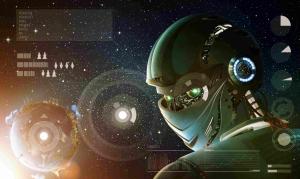
Apart from the unanswerable secular questions regarding existence and creation, a line needs to be drawn at this point to explain the evolution of thought that will come into play in future eras with the convergence of artificial intelligence and the postmodern concepts. Artificial Intelligence (AI) is fast moving towards a decentralized version of reality where reality becomes subject to greater, controllable change with technologies that will serve to alter human perception as to what is indeed real. Thus, reality becomes relative to what AI allows.
This aligns with the postmodern concept of there being no ultimate reality and thus, we, as humans can create and recreate our realities and thus the very constraints of our known existence.
While there are some beneficial uses for AI such assisted surgical procedures, AI’s collateral damage on our definition of reality and existence seems to be an unavoidable consequence of man’s never ending quest to build that “Tower of Babel” and to reach a height of unregulated technology that doesn’t take into account potentially irreparable damage to this, our known world in a quest to find a different but not necessarily better version of ourselves.





